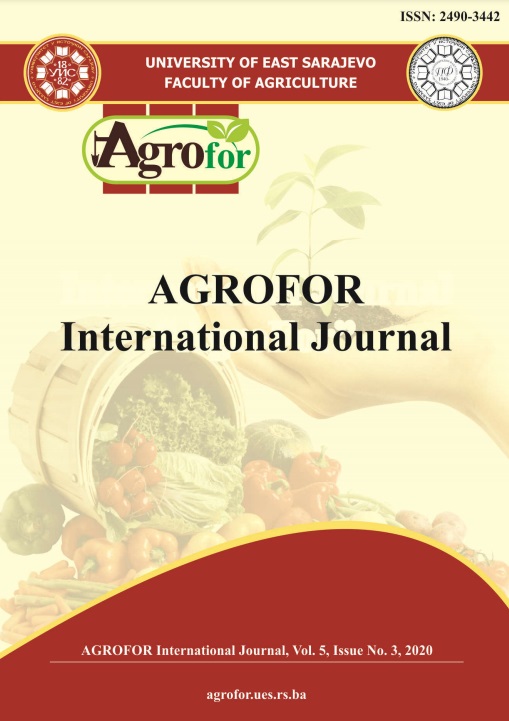YIELD OF GRAIN LEGUMES INTERCROPPING WITH CEREALS IN THE FLORINA AREA IN GREECE
DOI:
https://doi.org/10.7251/AGRENG2003100GAbstract
Intercropping of two or more crops in the same area at the same time is an old and
commonly used practice that results in the highest overall yield on a given plot,
because ofdifferent root growth, height and nutrient requirements of the crops
involved. The aim of this study was to determine the possibilities of intercropping
grain legumes with cereals for food production for human consumption. The
completely randomized design was applied with three replications and the
experiment was established in the farm of the Western Macedonia University in
Florina (Greece). Particularly, lentils (two varieties) was used as grain legumes,
and bread wheat (two varieties) and oat were used as cereals, which were grown
individually as well as intercropped with each other in mixed rows in a sowing
ratio 50:50. The plots consisted of seven rows five meters long of which the five
inner were harvested. A total of 33 experimental plots was installed. The field was
fertilized only with base fertilization. During the growing season, the following
morphological traits were measured: height and total height, the blooming, as well
as the grain yield, the length of spike (cm) and the number of fertile grain/spike.
Differences were found between treatments regarding yield as well as the
agronomic traits.In most cases the mixtureshad higher yield compared to their
respective monocrops.

